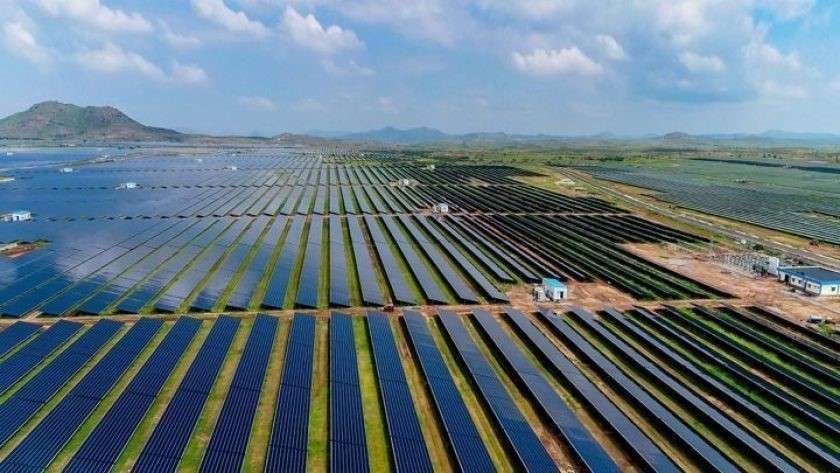ENVIRONMENT FRIENDLY SOLUTIONS FOR E-WASTE MANAGEMENT
Now a days there has been damage
caused to the environment by the E-Waste due to the radioactive substance present in it and
contaminating the ground water, polluting the air and soil too if not properly
disposed. Improper handling of e-waste is detrimental to the environment and
mankind. E-waste is combination of plastic and toxic chemicals and can cause
health hazards like kidney damage, skin ailments, DNA damage, muscle weakness,
asthmatic bronchitis etc. First, e-waste can have a damaging effect on the soil of
a region. As e-waste breaks down, it releases toxic heavy metals. Such heavy
metals include lead, arsenic, and cadmium. When these toxins leach into
the soil, they influence the plants and trees that are crowing from this soil. Thus,
these toxins can enter the human food supply, which can lead to birth defects
as well as a number of other health complications.
E-waste that is improperly disposed of by residents or businesses also leads to
toxins entering groundwater. This groundwater is what underlies many surface
streams, ponds, and lakes. Many animals rely on these channels of water for
nourishment. Thus, these toxins can make these animals sick and cause
imbalances in the planetary ecosystem. There is an need
to properly manage and dispose this waste. India among the top five countries
in E-Waste generation and nearly 2 Million tonnes of waste is generated in
India every year. Only 5% of total E-Waste generated gets recycled due to poor
infrastructure, legislation and framework which lead to a waste of diminishing
natural resources, irreparable damage of environment and health of people
working in the industry. Over 95% of E-Waste generated is managed by informal
sector and scrap dealers instead of recycling it. The Government of India is
also taking many initiatives in order to tackle this problem and adopt
environmental friendly solution for E-Waste management by recycling E-Waste at
a greater extent and integrating informal sector into a transparent recycling
system by E-Waste Management Rules 2016. An electronic waste or E-Waste or
e-scrap or waste electrical and electronic equipment (WEEE) can be defined as
the discarded waste computers, office electronic equipment’s entertainment
device electronics, mobile phones, television sets and the refrigerators. The E-Waste
may also pollute ground water, soil and air if not disposed properly and is
hazardous to environment. So, this approach talks about the strategy to be
adopted in India for proper collection, segregation, disposal and recycling of E-Waste.
Objectives:
1. To
ensure proper collection, segregation, disposal and recycling of E-Waste
2. To
create awareness among all the stakeholders about hazards of E-Waste
3. To
recycle and reuse of E-Waste contributing to sustainable development
Process
For E-Waste management:
The end user need to give
E-Waste to collection point which will be provided in each wards (ward1,
ward2, ward3…) of the city/town (as shown in fig.1) at a specific location
feasible to every end user of the city. The collection will be done by Urban
local Body twice in a month or as per the requirement as in case of solid waste
is collected from households, offices, schools, shops etc. The collection
process will be decentralised so that collection of E-Waste will be done faster.
Once collection process is done all the E-Waste collected at each collection
point located in wards of the city/town will be transferred to segregation
centre (which is centralised) where E-Waste will be segregated and testing of E-Waste
part will be done and categorized into good condition and poor condition. The
parts which are in good condition will be sold at minimal price to
manufacturing industry for re-production of the parts. The segregation of parts will be done which are in poor
condition as parts having potential be recycle will be transfer to recycling
centre where separation of the parts having hazardous
substances like CRT, printed circuit boards etc. will be done and then
recovery of the precious metals like copper, gold or lead can be done with the
help of the efficient and powerful E-Waste recycler and recycled product will
be used by end users again. The parts which are totally outdated
will be transfer to disposal site for Incineration and Acid bath.
Incineration is a controlled
way of disposing off the E-Waste and it involves combustion of
electronic waste at high temperature in specially designed incinerators. This E-Waste
disposal method is quite advantageous as the waste volume is reduced extremely
much and the energy obtained is also utilized separately. Another method can be
Acid bath which involves soaking of the electronic circuits in the powerful
sulphuric, hydrochloric or nitric acid solutions that free the metals from the
electronic pathways and the recovered metal is used in the manufacturing of
other products.
Steps towards E-Waste management:
There is need to create action
plan which will include all the strategies to be implemented for E-Waste
management explaining the process for Collection, Segregation, disposal and recycling
of E-Waste. Also, it will explain that process is continuous and will benefit
the end user at the end as recycled products will be used by end users itself
as shown in fig 1. Create awareness among citizen by taking campaigns
explaining hazards of E-Waste and advertise the ideas, reason behind the
collection and disposal of E-Waste by posters, hoardings, videos on social
media etc. Also conduct open interactive session where the inputs of citizens
are welcomed regarding E-Waste management process which is more likely public
participation. Create incentives to citizens like discount on purchase
of new electronic item so that they can voluntarily contributing to control
pollution and protect environment by giving E-Waste in order to achieve the
objectives of E-Waste management. There should be one special team who will be tracking
and monitoring the collection, segregation, disposal and recycling process
of E-Waste. The team will be appointed by Urban Local Bodies who will be headed
by officer on special duty and giving weekly report to Urban Local Body.
Fig
1. Process for E-Waste Management
This
strategy for E-Waste management will help to protect environment from the
hazardous effect of E-Waste by proper collection, segregation, disposal and
recycling of E-Waste as shown in fig 1. and creating awareness among end users
by posters, advertisement, social media, conducting interactive session,
publishing articles in newspaper and so on which is more mean towards public
participation and inclusive approach. Also encourage end users by providing
incentives so that citizen will contribute more in protecting environment voluntarily.
The whole process will be tracked and monitored by special team appointed by
Urban Local Body headed by officers on special duty. This process will also
initiate the proper record of e-waste collected, disposed and recycled in
cities/towns. Adopting this strategy will be a step towards achieving a goals
of sustainable development and saving the environment from harmful substances
and making it healthier. Urban Local Bodies and planners need to suggest
proposals for e-waste management in development plans, local area plans and
zonal plan for a better cause.
Together
We Will Grow, Together We Will Build
Related Articles

SOLAR FARMS: A NEED TO SHIFT TOWARDS A RENEWABLE ENERGY

Intelligent Energy System for Sustainable Use

CONCEPT OF 3-30-300 RULES IN URBAN AREAS

Housing Typologies and Characteristics



